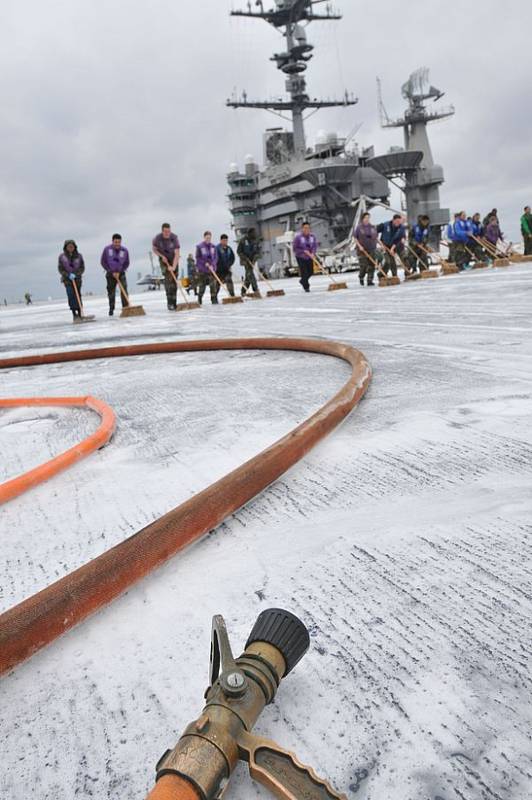
Welcome to MSW’s Scuttlebutt! Here’s the news for the day.

Barracuda Programme: DCNS Completes First Hull Section of Duguay-Trouin Nuclear Attack Submarine
Source: DCNS
CHERBOURG, France --- The first hull section of the Duguay-Trouin, the second in class of the Barracuda type nuclear-powered attack submarine, has left the prefabrication hall at DCNS’s Cherbourg centre. This first production milestone was passed on schedule and is highly symbolic, since with the first hull section the submarine begins to take on its physical shape. The Barracuda programme, led by the French defence procurement agency (DGA), calls for delivery of six submarines between 2017 and 2028.
The hull section is made of steel alloy. It measures approximately 9 metres in diameter by 4 metres in length and weighs 40 tonnes. Section no. 7 will form part of the aft half of the hull, immediately behind the nuclear reactor compartment and will eventually accommodate the suspended block containing the electrical distribution plant.
This first milestone was passed on time by the DCNS teams, who have taken significant steps to optimise construction of this series of six submarines, through the use of advanced hull forming and welding techniques. Fabrication of the remaining hull elements for the Duguay-Trouin — 20 other hull sections and 4 interface pieces — will follow in the next few months.
Construction of the Suffren, the first in class of the Barracuda type submarines, is also on schedule at the Cherbourg centre. Joining of the hull sections at the assembly facility is moving forward at a brisk pace, with the first equipment integration phases set to begin in the next few months.
The Barracuda next-generation nuclear-powered attack submarines, or SSNs (French designation SNA-NG), will be a key component of the French Navy’s force projection assets. In addition to anti-surface and anti-submarine warfare, the Barracuda’s mission capabilities will include intelligence gathering, special operations (by deploying commandos) and land strikes, with the MDCN naval cruise missile. Barracuda SSNs will carry a range of armaments, including the future heavyweight torpedo, the SM39 antiship missile and the MDCN (up to 20 armaments simultaneously).

USS Hornet captures HMS Penguin
Though the United States had ratified the 24 December 1814 Treaty of Ghent on 18 February 1815, thus formally bringing the War of 1812 to an end, this information took a long time to reach ships at sea. Thus, in the late morning of 23 March 1815, when the U.S. Sloop of War Hornet (Master Commandant James Biddle) sighted the British brig-sloop Penguin (of similar size and force) off Tristan d'Acunha island in the south Atlantic, neither vessel was aware that their two nations were now at peace.
The two sloops approached each other on roughly parallel courses, Penguin to windward, and opened fire at about 1:40PM. They exchanged broadsides (Hornet firing to starboard, Penguin to port) for some fifteen minutes when the British commanding officer was mortally wounded while attempting to run down his adversary. Penguin's bowsprit then caught in Hornet's rigging and, as the two separated, broke away, taking with it her foremast. Disabled and very much the worse off from American gunfire, the British warship surrendered shortly after 2PM. She was too badly damaged to save, and her crew was sent to Rio de Janeiro in the U.S. Schooner Tom Bowline, which arrived on the scene in company with U.S. Sloop of War Peacock soon after the battle.
Hornet and Peacock remained in the vicinity for about three more weeks, then sailed for the East Indies, still unaware that the war was over. While en route on 27 April they sighted HMS Cornwallis, a 74-gun ship of the line, and mistook her for an indiaman. A long chase ensued when they discovered their error. By skillful seamanship, assisted by the battleship's poor gunnery, the two Americans escaped. Hornet, however, had thrown overboard her spare spars, boats, nearly all of her guns and ammunition and much other equipment and supplies. She thus was obliged to return to the U.S., arriving at New York on 9 June 1815.
from US Navy

The Search for the USS Indianapolis
Today’s website is the The Search for the USS Indianapolis. Enjoy.
This Day in U.S. Naval History
1815 - USS Hornet captures HMS Penguin in a battle lasting 22 minutes.
1882 - The Secretary of the Navy, William H. Hunt, issues General Order No. 292, creating the Office of Naval Intelligence.
1917 - USS New Mexico (BB 40) is launched as the first dreadnought with turboelectric drive.
1945 - Carriers begin pre-assault strikes on Okinawa; kamikaze attacks follow.
1958 - Simulated Polaris missile is launched from a submerged tactical launcher facility off California.
1965 - Lt. Cmdr. John W. Young, pilot of Gemini 3, completes three orbits in four hours, 53 minutes, at an altitude of 224 km. Recovery was by helicopters from USS Intrepid (CVS 11).
Diorama Idea of the Day

Sailors aboard the aircraft carrier USS George Washington (CVN 73) scrub the flight deck during a counter-measure wash down.
Gator











